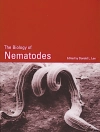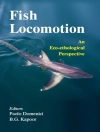Woody plants belong to various taxonomic groups, which are heterogeneous in morphology, physiology, and geographic distribution. Othe JWise, they have neither strong evolutionruy relationships nor share a conunon habitat. They are a prima Iy source of fiber and timber, and also include many edible fruit species. Their unique phenotypic behavior includes a perennial habit associated with extensive secondary growth. Additional characteristics of woody plants include: developmental juvenility and maturity with respect to growth habit, flowering time, and morphogenetic response in tissue cultures; environmental control of bud dormancy and flowering cycles; variable tolerance to abiotic stresses, wounding and pathogens; and long distance transport of water and IRltrients. Woody plants, particularly tree species, have been the focus of numerous physiological studies to understand their specialized functions, however, only recently they have become the target of molecular studies. Recent advances in our understanding of signal transduction pathways for environmental responses in herbaceous plants, including the identification and cloning of genes for proteins involved in signal transduction. should provide useful leads to undertake parallel studies with woody plants. Molecular mapping techniques, coupled with the availability of cloned genes from herbaceous plants, should provide shortcuts to cloning relevant genes from woody plants. The unique phenotypes of these plants can then be targeted for improvement through genetic engineering.
S.M. Jain & S.C. Minocha
Molecular Biology of Woody Plants [PDF ebook]
Volume 2
Molecular Biology of Woody Plants [PDF ebook]
Volume 2
Dieses Ebook kaufen – und ein weitere GRATIS erhalten!
Sprache Englisch ● Format PDF ● ISBN 9789401723138 ● Herausgeber S.M. Jain & S.C. Minocha ● Verlag Springer Netherlands ● Erscheinungsjahr 2013 ● herunterladbar 3 mal ● Währung EUR ● ID 4677249 ● Kopierschutz Adobe DRM
erfordert DRM-fähige Lesetechnologie












